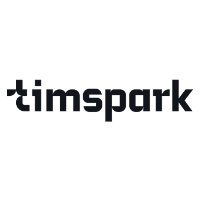

Founded 2022

1001-1500

$25-$49

25000-30000

Founded 2022

1001-1500

$25-$49

25000-30000
Timspark is at the forefront of software development, renowned for rapidly deploying skilled engineering talent. We specialize not just in staffing, but in curating and nurturing expert teams capable of addressing the diverse IT challenges of our clients.
Our approach combines the agility and speed of mobilizing top-tier resources with a deep expertise in team composition, ensuring each project is met with a tailored, effective, and innovative solution.
This unique blend of skills and services allows our clients to scale and innovate with unmatched efficiency and confidence.

7901 4th St N STE 300, Saint Petersburg, Florida, USA
Service Lines
Client Focus
Industry Focus

Alex Velesnitski
CTO
CTO and results-driven engineering manager with 16+ years of expertise in leadership and development. Skills span business development, delivery management, architecture, distributed systems development, and aligning tech strategy with business goals.

Hanna Strashynskaya
CMO
Hanna is a passionate professional with a keen interest in the intersection of people and innovation. With a diverse skill set and expertise in market research, business development, team and project management, strategy, communications, marketing, and sales, she is dedicated to shaping the future where these elements converge. Hanna thrives in navigating the dynamic landscape of business and technology to drive growth and success.

Inga Virunen
VP of Solution Advisory
As VP of Solution Advisory, Inga excels in fostering growth through customer-centric strategies. Her role blends strategic thinking, creativity, and leadership to drive team collaboration and customer satisfaction. Inga's focus on understanding and solving customer needs is key to Timspark's success.

Anastasiya Berlina
HR Generalist
As an HR Generalist, Anastasiya excels in talent management and shaping corporate culture. Her expertise in recruitment strategy and employee development programs is vital for sourcing top IT talent. Anastasiya enhances Timspark's culture, fostering growth through her holistic HR approach.

Samuel Krendel
Head of Partnerships
Samuel Krendel, Head of Partnerships at Timspark, excels in connecting businesses with growth-oriented solutions. Specializing in software development areas and system integration, he drives partnerships, cost reduction, and efficiency, inviting collaboration for new opportunities.
SelectedFirms © 2015 - 2024. All Rights Reserved.